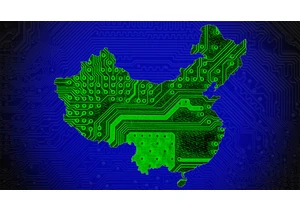Google recently announced that it no longer claims to be carbon neutral. Why? Because their investment in artificial intelligence has raised emissions beyond what they can offset. They now hope to reach net-zero carbon by 2030.
This example points to an emerging IT paradox. How can IT support innovation with more graphics processing units (GPUs) and more storage for their growing quantities of data while also reducing carbon emissions?
Gartner predicts that by 2025, 50% of CIOs will have performance metrics tied to the sustainability of the IT organization. As companies make public claims to reduce emissions, IT leaders are being charged with finding ways to make significant changes that don’t negatively impact business operations. According to Accenture, 37% of the largest companies globally now have public targets for achieving a neutral carbon footprint, but only 18% have the speed to do it quickly enough to be net zero by 2050.
Yet many European companies have been able to handle this paradox. A Digital Decarbonization study commissioned by Google found that the most advanced digital economies in the EU reduced greenhouse gas emissions by 25% between 2003 and 2019 while increasing economic output by 30% in the same period. This suggests that companies can innovate and thrive while reducing carbon emissions.
How IT leaders can manage this paradox
There are three steps IT leaders can take right away, in order to make better decisions that are both smart for business and environmentally sustainable.
- Gather intelligence by asking the right questions.
The first thing many companies are doing to reduce carbon emissions is eliminating on-premise data storage by outsourcing to cloud providers that use renewable energy and claim to be moving towards net neutrality. But like the Google example, there are no guarantees that a provider will achieve or remain net zero. IT leaders need to better understand the carbon cost of the hardware they use (because yes, there is a major carbon footprint from the mining and manufacturing of hard drives). IT leaders also need to demand carbon transparency from suppliers. Without understanding the full picture of carbon emissions, it’s nearly impossible for IT leaders to see the reduction opportunities.
- Make carbon emissions part of every RFP.
The only way for IT leaders to get the intelligence they need from their ecosystem is to force that level of transparency into the buying process. IT leaders will need to justify purchase decisions to ESG teams in the future, so this is a smart, forward-thinking move.
- Research alternative ways that technology providers are achieving carbon reductions.
Carbon emissions aren’t just about energy. There are many new technologies that have created ways to reduce carbon by extending the life of existing hardware, getting more efficient use from that hardware, and by not building new infrastructure. Storj published a white paper about a new approach to cloud storage that utilizes existing spare capacity. I think it does a great job explaining some of the critical and unexpected ways that carbon emissions are generated and an approachable model for reduction. There are also industry associations like the Digital Sustainability Alliance that are helping IT leaders navigate these changes by taking the initiative to share actionable data, new research, and emerging solutions.
While not all IT leaders feel the contrasting pressure to increase innovation while decreasing carbon emissions, it’s clearly a matter of when, not if this will become an imperative across the board. Getting ahead of this with self-education and out-of-the-box thinking about new ways to innovate more responsibly should be a top priority for IT leaders.
Colby Winegar is chief revenue officer of Storj.
Connectez-vous pour ajouter un commentaire
Autres messages de ce groupe


OpenAI is rolling out a new AI agent within ChatGPT that can browse th

Mark Zuckerberg and current and former directors and officers of Meta Platforms agreed on Thursday to settle claims seeking $8 billion for the damage they allegedly caused the company by allowing

Welcome to AI Decoded, Fast Company’s weekly newsletter that breaks down the most important news in

Holders of the digital tokens issued by World Liberty Financial, one of the

The use of AI companions is no longer niche behavior but has become em

